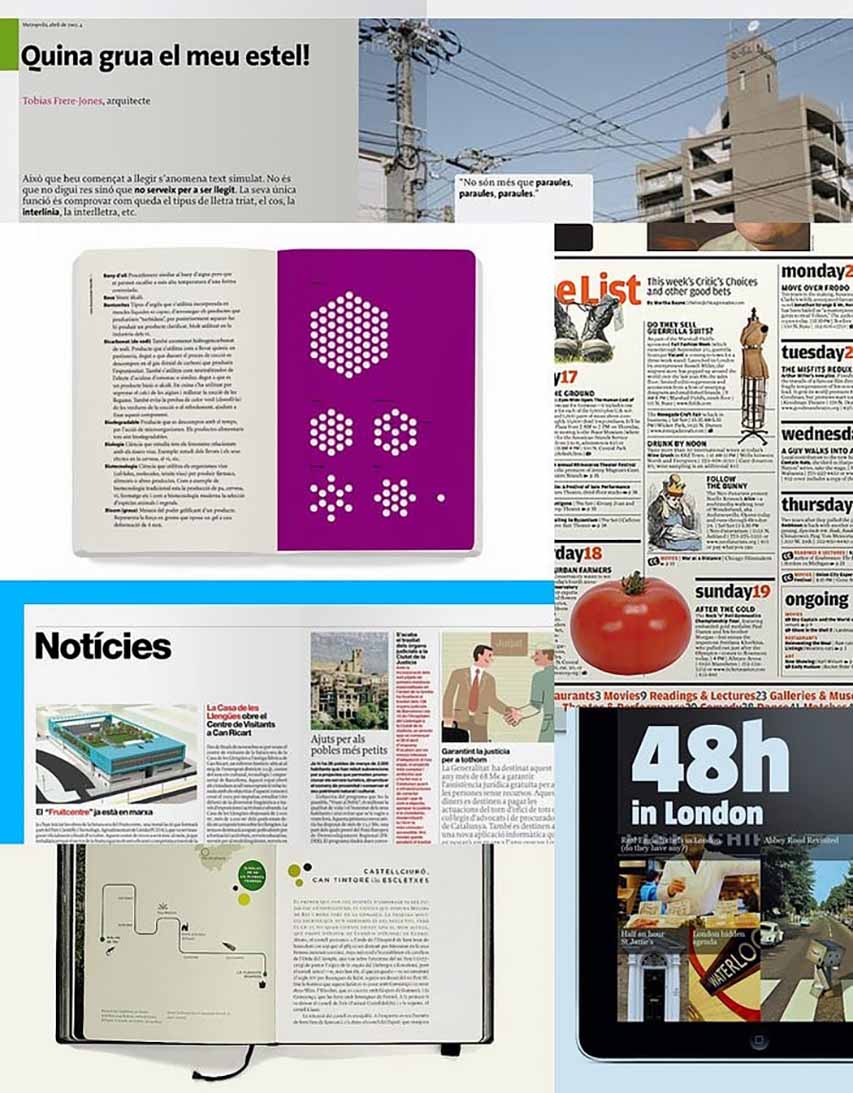Blog /
Typographic products: four pillars
Typographic products: four pillars
Oct 07, 2022
by Pere Farrando
What columns support the building of any typographic product? What is the nature of each one?
Each communication channel -the professional written medium, the medium in which typographic products are created and circulated- shares the same four pillars, which can be explained as seen below.
Writing (script and ‘scriptura’)
- A fully fledged form of communication. As such, it is only comparable to a spoken language. It allows for a message to be stored and read at a different time and place than that of its creation.
- Thought in graphic form. Mainly linguistic thought, but not always. A formula, for instance, is a piece of writing representing an abstract statement, not a linguistic one.
- Repertoire of stylized marks, a system or code. Some marks represent linguistic units (enclosed in vertical bars): p Ș ω Д; others represent abstract or informative notions: 2 $] → £ #.
- The matter, which is standardized by Unicode.
- Hand and arm gestures using a simple device (in handwriting) or complex technological mediation (keyboards, applications, digital devices) when using digital tools.
- Actuality, not potentiality. A real macrophenomenon: the sum of all acts of writing.
Text (‘textus’)
- Again, an entity of dual nature: thought set in a graphic form.
- Act of expression, aspiration of being understood, purpose of clarity.
- A fully developed written chain.
- Discourse, a complex statement, ideas in a structure, debate, connotation.
- Ferran Toutain (Sobre l’escriptura, 2000, 13): writing a text is “a method of thinking; maybe not the only one, but certainly the most articulated, the most precise, the most ambitious”.
- Matter on a digital screen or a page is the component that livens up the page or screen.
- In the digital sphere, it is either completely lacking in format (plain text) or it is formatted (rich text).
Paragraph (‘παράγραφοц’)
- A block of writing, a component of the discourse, a basic thesis.
- A unit of discourse within a larger unit. Toutain (idem, 62): “[It] cannot be autonomous of the paragraphs preceding it or coming after it, and at the same time its independent structure needs to be built. […] It’s a matter, as always, of proposing a subject and unfolding it.”
- One piece in the layout, identifiable thanks to specific graphic devices: indentation, white space before and after, a short last line, different body size…
- A layout unit with various specializations: running-text paragraph, quotation paragraph, note paragraph…
- Balance of black and white, distribution of three whites: between characters, between words, and between lines.
- The part of the work where typesetting and page layout converge.
Work (‘opus’, workpiece)
- The text entirely expanded. In classical rhetorical terms: inventio.
- Graphic composition: presentation of typographic forms in a deliberate harmony. In rhetoric terms: dispositio.
- Content: distribution according to a plan, a line of reading, and an hierarchy. In rhetorical terms: elocutio.
- Culmination of a creative, intellectual process.
- Publishing: gaining a presence, ideas emerging from whatever cave they were hiding in.
- Publishing: seal of approval by the author, editor, and publisher; an end point, completeness of message and form.
- One half of the communicative act of writing-reading. A work ready to be read, waiting for a reader, accessible.
- A product readable in circumstances unknown by its creators.
- An autonomous, self-sufficient piece of knowledge.
- An industrial product, an object (solid or digital) that can be recursively reproduced and with intrinsic economic value, even when it is given out for free.
Pere Farrando
Degree in Philology, proofreader and layout artist. Editorial Design and Typography Master’s Instructor.









